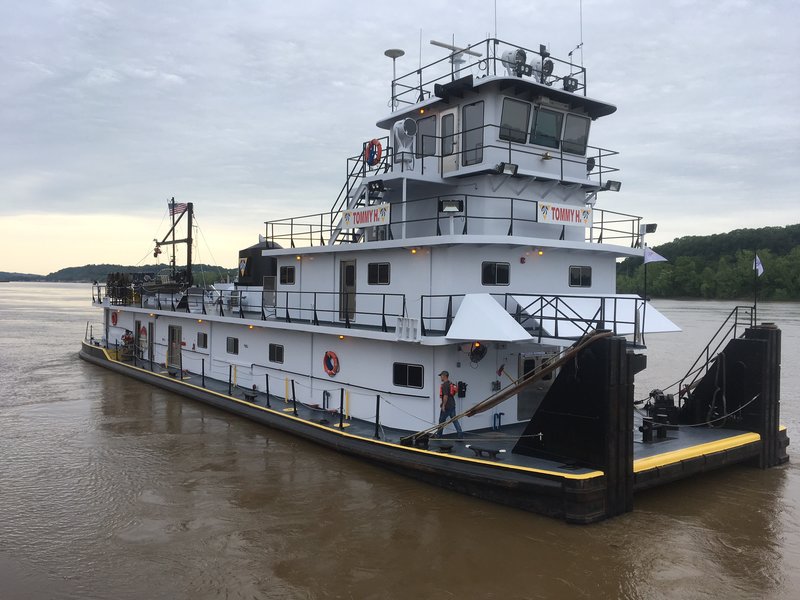The Coast Guard has posted its 2018 Domestic Vessel Annual Report, "Flag State Control in the United States." The report highlights vessel inspections, deficiencies, and marine casualties.
The report contains statistics and information regarding inspections and enforcement of regulations on U.S.-flagged vessels. As required by the Save Our Seas Act of 2018, this report includes deficiency and detention rates for each type of inspected vessel, as well as performance metrics for recognized organizations that perform work on the Coast Guard’s behalf. For the first time, the Coast Guard has included information on the entire U.S.-flag fleet, including barges, cargo vessels, passenger vessels, vessels that operate on the Outer Continental Shelf, research and school ships, fishing vessels, and the newest members of the inspected fleet, towing vessels.
With the addition of towing vessels, which began getting inspected under Subchapter M in July 2018, the size of the U.S. inspected fleet grew by approximately 6,500 vessels to nearly 20,000 vessels, an increase of 50%. In 2018, Coast Guard marine inspectors conducted 20,048 inspections on U.S.-flagged vessels and identified 25,324 deficiencies. Compared to last year, the first year the Coast Guard published this annual report, the number of vessel inspections increased by 1,624 and the average number of deficiencies identified per inspection increased from 1.17 to 1.26, an increase of almost 8%.
Of the 20,048 inspections conducted in 2018, 25,324 deficiencies were identified on the 19,679 active vessels in the U.S. fleet. Passenger vessels account for 72.3% of those deficiencies, the report said. However, based on vessel population, cargo vessels received a higher ratio of deficiencies per vessel, with an average of 4.17. There were 1,946 reportable marine casualty investigations in 2018 involving 1,812 vessels. Towing vessels accounted for 48% of marine casualties and passenger vessels 26%.
In 2018, the barge fleet consisted of 4,735 active vessels, which represented 24% of the overall U.S. inspected domestic fleet. Of this total, 2,061 barges or 43.5% participate in the Streamlined Inspection Program (SIP). Of the 1,946 reportable marine casualties in 2018, 242 or 12.4% of these events involved a barge, according to the report. The top reportable marine casualty events involving the barge fleet were collision, allision or grounding, personnel casualty (injury or death), and material failure/malfunction.
In 2018, the inspected passenger vessel fleet consisted of 6,389 active vessels, which represented 32.4% of the overall fleet. Currently, 25 passenger vessels participate in the Streamlined Inspection Program (SIP), accounting for 0.4% of the fleet. Of the 1,946 reportable marine casualties in 2018, 508 or 26.1% of these events involved an inspected passenger vessel, the Coast Guard report said. The top three reportable marine casualty events involving the inspected passenger vessel fleet were: material failure, personnel casualty (injury or death), and collision, allision, or grounding.
In 2018, the outer continental shelf (OCS) fleet consisted of 548 active vessels, which represented 2.8% of the overall fleet size. Of this total, 32% (177) are offshore supply vessels (OSV), which are enrolled in the Alternate Compliance Program (ACP). OCS vessels received one flag state detention, which accounted for 2.5% of total detentions in 2018. Of the 1,946 reportable marine casualties in 2018, 34 or 1.7% of these events involved a member of the OCS fleet. The top three reportable marine casualty events involving the OCS fleet were: material failure/malfunction, collision, allison, or grounding, and personnel casualty (injury or death).
The compliance date for implementation of Subchapter M was July 20, 2018. Thus, only five months of data for inspected towing vessels is included in the Coast Guard report. In 2018, towing vessel fleet consisted of 7,403 active vessels, which represented 37.6% of the overall fleet size. Included in the total number of vessels are towing vessels that fall under inspection Subchapters I, M, and C.
The Coast Guard's domestic annual report will collect and report data for all towing vessels, both inspected and uninspected, until completion of the regulatory phase-in for Subchapter M. There were 1,278 inspections conducted in 2018, during which 1,915 deficiencies were identified at a ratio of 0.26 deficiencies per vessel. In comparison to the overall flag state fleet totals, towing vessel inspections accounted for 6.4% of inspections and 7.6% of deficiencies. Towing vessels received 12 flag state detentions in 2018, accounting for 30% of all flag state detentions. Of the total number of 1,946 reportable marine casualties in 2018, 935 or 48% of these events involved a towing vessel. The top three reportable marine casualty events involving the towing vessel fleet were collision, allision, or grounding, material failure/malfunction, and loss/reduction of propulsion/steering.




